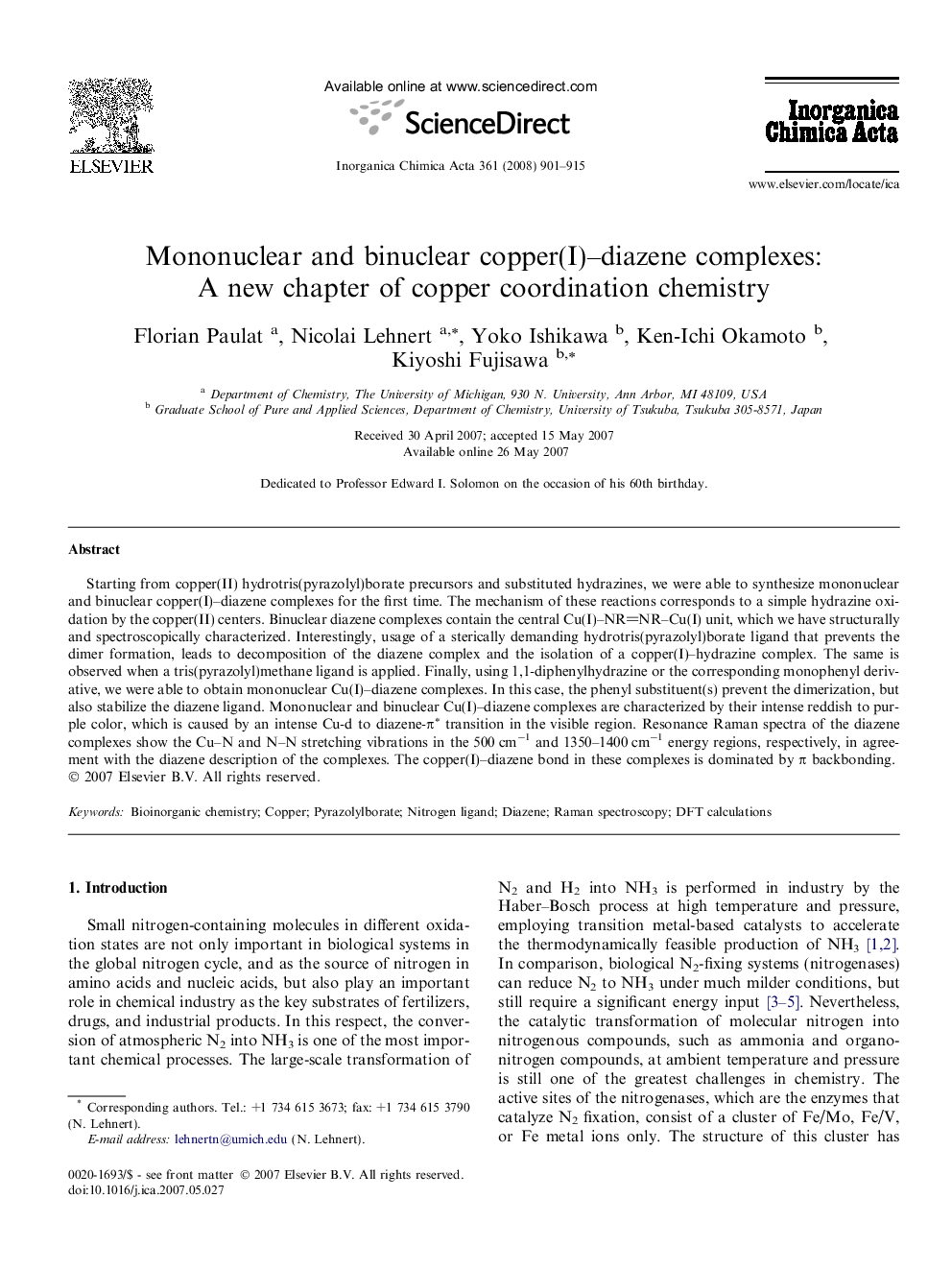| کد مقاله | کد نشریه | سال انتشار | مقاله انگلیسی | نسخه تمام متن |
|---|---|---|---|---|
| 1310258 | 975239 | 2008 | 15 صفحه PDF | دانلود رایگان |

Starting from copper(II) hydrotris(pyrazolyl)borate precursors and substituted hydrazines, we were able to synthesize mononuclear and binuclear copper(I)–diazene complexes for the first time. The mechanism of these reactions corresponds to a simple hydrazine oxidation by the copper(II) centers. Binuclear diazene complexes contain the central Cu(I)–NRNR–Cu(I) unit, which we have structurally and spectroscopically characterized. Interestingly, usage of a sterically demanding hydrotris(pyrazolyl)borate ligand that prevents the dimer formation, leads to decomposition of the diazene complex and the isolation of a copper(I)–hydrazine complex. The same is observed when a tris(pyrazolyl)methane ligand is applied. Finally, using 1,1-diphenylhydrazine or the corresponding monophenyl derivative, we were able to obtain mononuclear Cu(I)–diazene complexes. In this case, the phenyl substituent(s) prevent the dimerization, but also stabilize the diazene ligand. Mononuclear and binuclear Cu(I)–diazene complexes are characterized by their intense reddish to purple color, which is caused by an intense Cu-d to diazene-π∗ transition in the visible region. Resonance Raman spectra of the diazene complexes show the Cu–N and N–N stretching vibrations in the 500 cm−1 and 1350–1400 cm−1 energy regions, respectively, in agreement with the diazene description of the complexes. The copper(I)–diazene bond in these complexes is dominated by π backbonding.
Mononuclear and binuclear diazene and hydrazine complexes of copper(I) have been prepared for the first time and structurally and spectroscopically characterized. Examples for mononuclear complexes are shown in the figure. For this purpose, hydrotris(pyrazolyl)borate coligands have been applied. The diazene complexes show purple to red colors, unusual for copper(I). These colors are caused by intense Cu(I)-d to diazene-πv∗ CT transitions.Figure optionsDownload as PowerPoint slide
Journal: Inorganica Chimica Acta - Volume 361, Issue 4, 3 March 2008, Pages 901–915